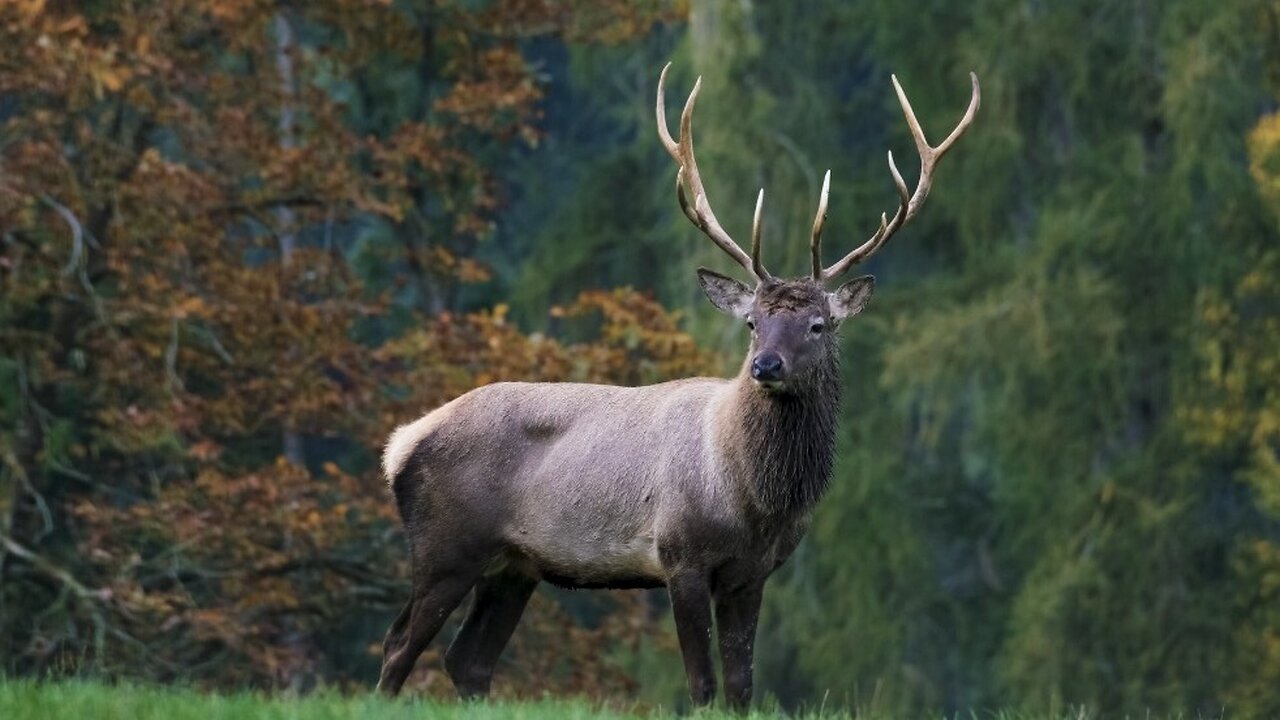Premium Only Content

"Graceful Wanderers: The Life and Ecology of Deer"
Deer are hoofed mammals belonging to the family Cervidae, which includes species like white-tailed deer, mule deer, elk, and moose. They are found across many continents, including North America, South America, Europe, and Asia, and can adapt to various habitats such as forests, grasslands, mountains, and wetlands.
Physical Characteristics
Deer are known for their graceful build, with slender legs that make them agile runners and jumpers. Males, and occasionally females in some species, possess antlers made of bone. These antlers are shed and regrown annually, serving primarily in mating displays and territorial battles. Their coats vary depending on the species and season—often reddish or brown in summer and greyish in winter for camouflage.
Diet
Deer are herbivores, primarily feeding on leaves, grasses, shoots, fruits, and bark. Their diet changes with the seasons, and they are known for their ruminant digestive system, which allows them to digest tough plant matter. Like cows, they have a four-chambered stomach, which helps break down fibrous food through fermentation.
Behavior
Deer are mostly crepuscular, meaning they are most active during dawn and dusk. They live in herds, which helps protect them from predators. Females often form groups with their offspring, while males may lead solitary lives or form small bachelor groups, especially outside of the breeding season.
During the breeding season, or rut, males compete for mates by clashing antlers and marking territory with scent glands located on their legs, necks, and heads. After mating, females give birth to one or two fawns, which are often hidden in dense vegetation until they are old enough to follow their mother.
Predators and Threats
Deer are preyed upon by large carnivores like wolves, bears, mountain lions, and coyotes. Human activities, such as hunting and habitat destruction, are also significant threats. Despite this, many deer populations have adapted well to human environments and are frequently seen in suburban areas.
Ecological Importance
Deer play an important role in ecosystems as herbivores. They help control plant growth and spread seeds, but overpopulation can lead to issues like overgrazing, which can negatively impact local flora and fauna. In some regions, they are also a key food source for large predators.
Species of Deer
1. White-tailed deer (Odocoileus virginianus): Found in North and Central America, white-tailed deer are known for their characteristic white tails that they raise when alarmed.
2. Mule deer (Odocoileus hemionus): Native to western North America, mule deer are named for their large, mule-like ears.
3. Red deer (Cervus elaphus): One of the largest deer species, red deer are found in Europe, Asia, and parts of North Africa. They are known for their impressive antlers and deep, resonant calls during the rut.
4. Moose (Alces alces): The largest species in the deer family, moose are found in northern forests across North America and Eurasia. They have broad, palmate antlers and are adapted to cold environments.
5. Elk or wapiti (Cervus canadensis): Found in North America and Asia, elk are larger than most deer species and have a loud bugling call during the mating season.
6. Roe deer (Capreolus capreolus): Native to Europe, roe deer are smaller in size, with short antlers and reddish-brown coats.
Deer have a fascinating biology and play a crucial role in their ecosystems, but they also face challenges from both natural predators and human activities.
-
 3:55:04
3:55:04
ThatStarWarsGirl
7 hours agoTSWG LIVE: Big NEWS! Plus Reacting to Woke Meltdowns!
90.9K13 -
 8:02:46
8:02:46
FusedAegisTV
9 hours ago『AST lvl 100』Tuesday Raid & Rant | Final Fantasy XIV | Patch 7.1 Day of Reckoning!
60.3K2 -
 59:17
59:17
Matt Kohrs
9 hours agoRumble's Q3 Recap & What's Next w/ CEO Chris Pavlovski
82.9K30 -
 1:43:47
1:43:47
Adam Does Movies
13 hours ago $22.81 earnedGladiator II Early Reviews + Tom Cruise Stans Glen Powell + Freddy Krueger - Movie News LIVE!
73.8K5 -
 2:24:03
2:24:03
WeAreChange
9 hours agoTrump Creates Department Of Government Efficiency With Elon And Vivek!
134K61 -
 2:10:32
2:10:32
Slightly Offensive
11 hours ago $26.93 earnedGET READY: Civil Unrests ERUPTS As Trump Resistance 2.0 EMERGES
72.1K42 -
 59:40
59:40
The StoneZONE with Roger Stone
7 hours agoShowdown in the Republican US Senate Caucus - RINOs Seek to Undermine Trump | The StoneZONE
70.3K45 -
 1:26:29
1:26:29
I_Came_With_Fire_Podcast
13 hours agoSpecial Episode: Frank Luna with Smokeless Vets
43.8K3 -
 4:16:31
4:16:31
Tundra Gaming Live
8 hours ago $1.59 earnedFormer Air Force Maintainer (Weapons) Hits The Grind For The F-16c
29.8K -
 1:07:06
1:07:06
The Officer Tatum
9 hours agoLIVE MSNBC, CNN IMPLODE As Trump BUILDS DREAM TEAM!
92K189